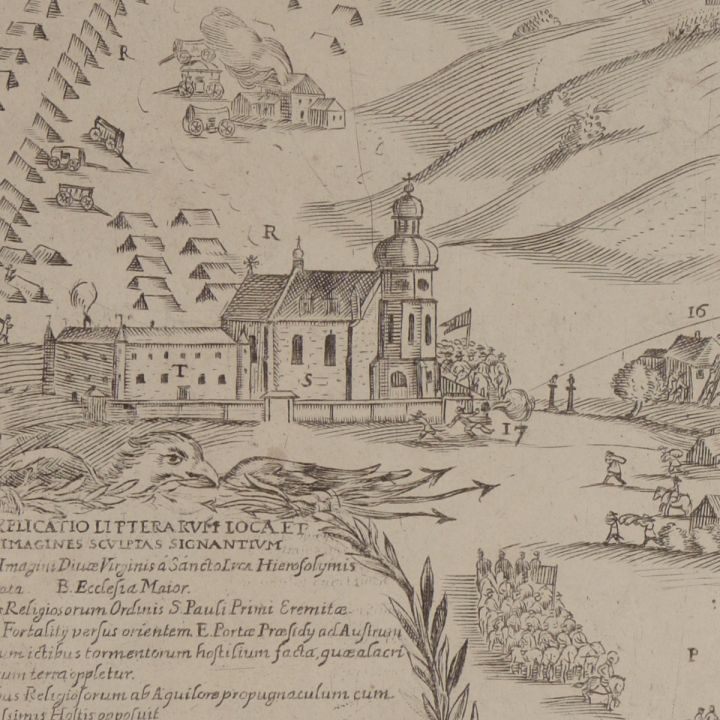B. Church of st. Andrew and st. Barbara
Since 1430, the place associated with the cult of the image of Our Lady of Częstochowa. It was here, according to legend, that a painting profaned by iconoclasts was abandoned and washed by the spring. Initially, a cross was erected on the site, then a wooden chapel dedicated to St. Barbara was built. In 1637, on the initiative of the Prior of Jasna Góra, Father Andrzej Gołdonowski, construction of a church and monastery began, which was completed in 1642. The church was consecrated as early as in 1643. The complex of buildings originally consisted of a single-nave church, a monastery, a pilgrim and guest house, two wooden houses for the monastery staff, outbuildings and a garden. The outline of the plan of the St. Barbara and St. Andrew Church may have been modeled after the original form of the Gothic St. Sigismund's Church. This is indicated by the numerous preserved brick veneers, cornices for which shaped bricks were used – possibly from demolitions on Jasna Góra – as well as the high shape of the windows and the lower part of the tower. The chancel, the upper part of the tower and its cupola, on the other hand, have Baroque forms. The location of the church with its axis to the south, which was not in accordance with tradition, was probably dictated by the desire to make it strictly subordinate to the Jasna Góra monastery. The church was destroyed during the Swedish Deluge in 1655. In the following centuries, it was rebuilt many times.

